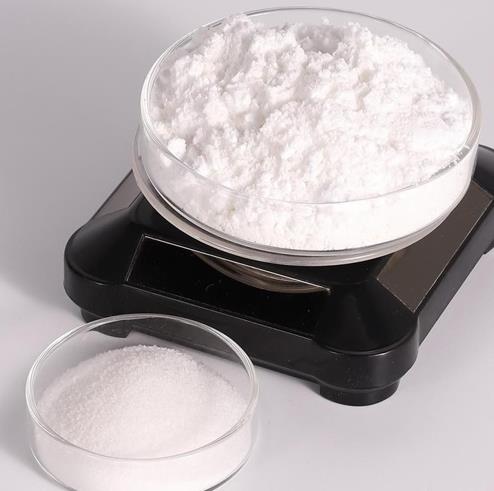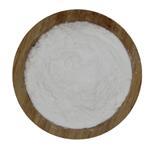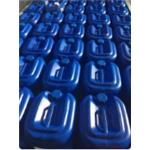Exploring Trimethylamine Hydrochloride: A Key Compound in Chemical Research
Introduction
Trimethylamine hydrochloride is a compound formed by the reaction of trimethylamine with hydrochloric acid. A colorless gas with a fishlike odor at low concentrations changing to an ammonia-like odor at higher concentrations. It is shipped as a liquid under its vapor pressure. Contact with the unconfined liquid can cause frostbite from evaporative cooling or chemical-type burns. The gas is corrosive and dissolves in water to form flammable, corrosive solutions. Gas is an asphyxiate by the displacement of air. Produces toxic oxides of nitrogen during combustion. Prolonged exposure to heat can cause the containers to rupture violently and rocket. Long-term inhalation of low concentrations or short-term inhalation of high concentrations has adverse health effects.
This white crystalline solid is soluble in water and ethanol, and it is commonly used in organic synthesis as a source of trimethylamine. Trimethylamine hydrochloride finds application as a reagent in the production of quaternary ammonium compounds and as a catalyst in various chemical reactions. In the manufacture of quaternary ammonium Compounds; as insect attractants; as warning agents for natural gas. It is also utilized in the pharmaceutical industry for the synthesis of certain medications. This compound is known for its distinctive odor resembling that of fish and ammonia.

Figure 1 Characteristics of Trimethylamine hydrochloride
The synthetic route of trimethylamine hydrochloride
The first type, Raw material preparation: Firstly, prepare the required raw materials, namely trimethylamine and hydrochloric acid. The purity of trimethylamine is usually required to be between 99.7% and 99.8%, while the concentration of hydrochloric acid is generally 31%.
For example, 31% hydrochloric acid and 95-96% hydrogen chloride are circulated and concentrated between the hydrochloric acid concentration absorber and the hydrochloric acid concentration absorption tank. When the hydrochloric acid concentration reaches 34-35%, it enters the first reactor and reacts with trimethylamine. The reacted trimethylamine hydrochloride (concentration between 57-58.6%) enters the hydrogen chloride absorber, further absorbing hydrogen chloride and reducing the pH value. When the pH value drops to 1-2, it enters the secondary reactor and reacts with trimethylamine again, finally obtaining trimethylamine hydrochloride with a concentration of 67-70%.
Product collection: After the reaction is completed, the high-concentration trimethylamine hydrochloride solution obtained is sent to the salt reactor and output through the trimethylamine hydrochloride finished product pipeline. The generated exhaust gas can be sent to the exhaust absorption tank for recovery through the exhaust gas recovery pipeline.
The second type, A device for producing high concentration trimethylamine hydrochloride, comprising a hydrochloric acid concentration absorber, a hydrochloric acid concentration absorption tank, a primary reactor, a hydrogen chloride absorber, a hydrogen chloride absorption tank, a secondary reactor, and a salt forming kettle, wherein the bottom of the hydrochloric acid concentration absorber is connected to the top of the hydrochloric acid concentration absorption tank。
The bottom of the hydrochloric acid concentration absorption tank is connected to the top of the hydrochloric acid concentration absorber and the bottom of the first stage reactor, and the connecting pipeline is equipped with a circulation pump and a control valve; Connect the top of the primary reactor to the top of the hydrogen chloride absorber; Connect the bottom of the hydrogen chloride absorber to the top of the hydrogen chloride absorption tank; The bottom of the hydrogen chloride absorption tank is connected to the top of the hydrogen chloride absorber and the bottom of the secondary reactor, and the connecting pipeline is equipped with a circulation pump and a control valve。
Connect the top of the secondary reactor to the top of the salt reactor; There is a circulation pipeline between the top and bottom of the salt forming kettle, which is equipped with a circulation pump and a finished product pipeline for trimethylamine hydrochloride; The top of the hydrochloric acid concentration absorber and the top of the hydrogen chloride absorber are both connected to hydrogen chloride gas pipelines。
The top of the hydrochloric acid concentration absorber is connected to a hydrochloric acid pipeline; There are tail gas recovery pipelines connected to both the hydrochloric acid concentration absorption tank and the hydrogen chloride absorption tank; There are trimethylamine pipelines connected to the bottom of both the first and second reactors; The connections mentioned are all pipeline connections.
![Article illustration]() Reference
Reference
[1] Miyake M, Motonami H, Shiomi S, et al. Electrodeposition of purified aluminum coatings from dimethylsulfone–AlCl3 electrolytes with trimethylamine hydrochloride[J]. Surface and Coatings Technology, 2012, 206(19-20): 4225-4229.
[2] Ng K L, Dong T, Anawati J, et al. High‐performance aluminum ion battery using cost‐effective AlCl3‐trimethylamine hydrochloride ionic liquid electrolyte[J]. Advanced Sustainable Systems, 2020, 4(8): 2000074.
References:
[1] MASAO MIYAKE. Electrodeposition of purified aluminum coatings from dimethylsulfone–AlCl3 electrolytes with trimethylamine hydrochloride[J]. Surface & Coatings Technology, 2012, 206 19: 3809-4328. DOI:10.1016/j.surfcoat.2012.04.027.[2] M S MULLA Y S H H Axelrod. Field evaluation of chemical attractants against the flyFannia femoralis (Diptera: Muscidae).[J]. Journal of Chemical Ecology, 1984, 10 2. DOI:10.1007/BF00987862.
Lastest Price from Trimethylamine hydrochloride manufacturers

US $10.00/ASSAYS2025-05-04
- CAS:
- 593-81-7
- Min. Order:
- 1ASSAYS
- Purity:
- 99%
- Supply Ability:
- 10 ton

US $0.00-0.00/G2025-04-21
- CAS:
- 593-81-7
- Min. Order:
- 1G
- Purity:
- 99%
- Supply Ability:
- 1 ton/year


